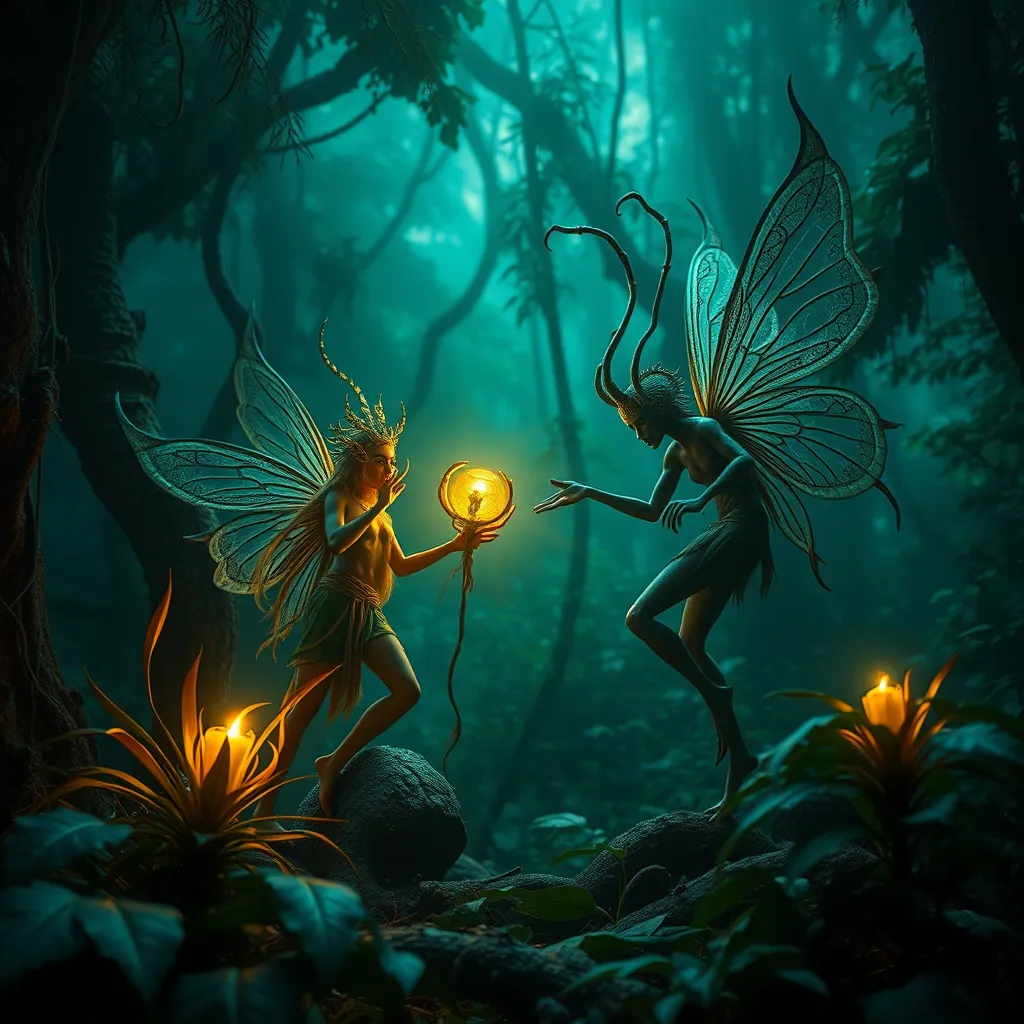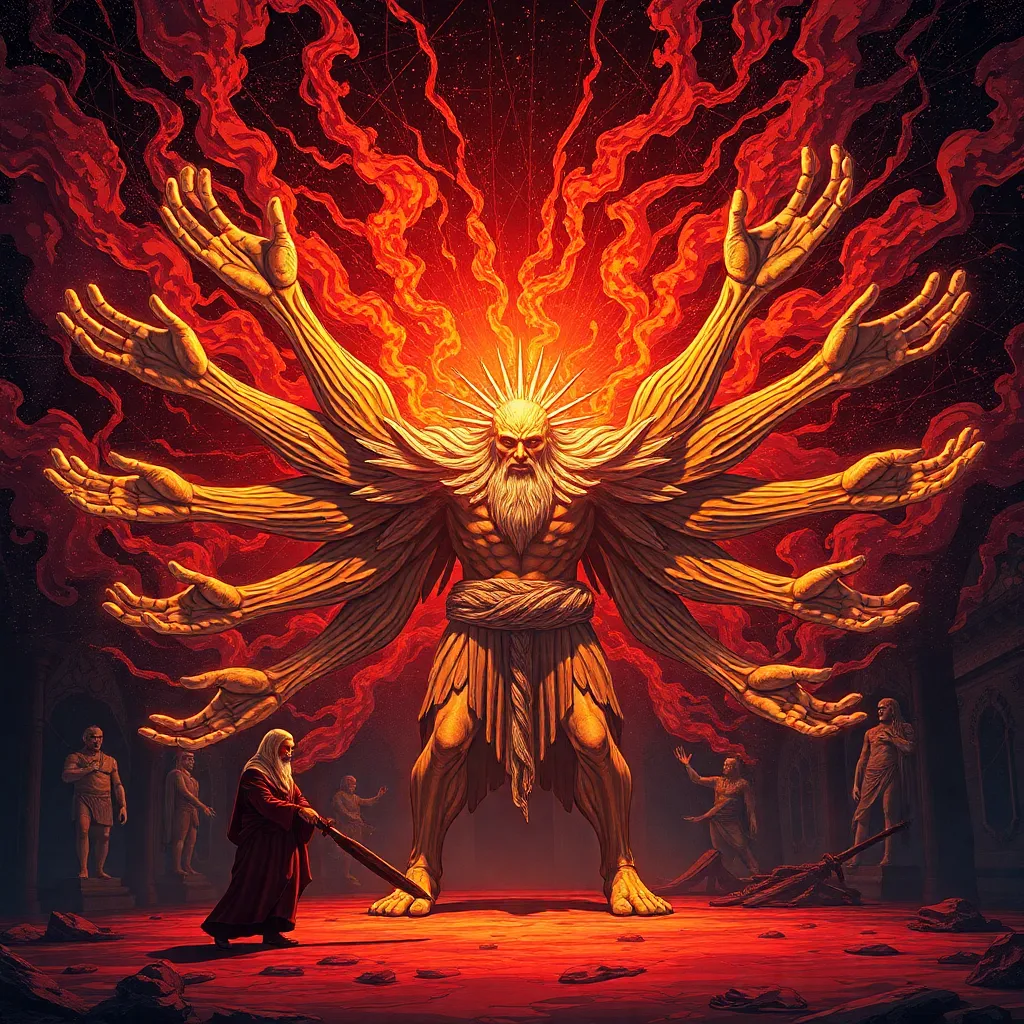Fairies of the Amazon: The Spirits of the Rainforest
I. Introduction
The Amazon Rainforest, often referred to as the “lungs of the planet,” is a vast and biodiverse ecosystem that spans several countries in South America. This incredible rainforest is home to millions of species of flora and fauna, many of which have yet to be discovered. However, the Amazon is not just a biological treasure; it is also a cultural one, steeped in myths and legends that have been passed down through generations.
Fairies, or spirits, feature prominently in the folklore of various cultures around the world. These ethereal beings often embody the natural elements, serving as protectors or tricksters within their respective ecosystems. In this article, we will explore the fairies of the Amazon, delving into their characteristics, significance in local culture, and their role as guardians of the rainforest.
II. The Cultural Significance of Fairies in Amazonian Folklore
Amazonian folklore is rich with stories of fairies and spirits, reflecting the deep connection indigenous tribes have with their environment. Historical context shows that fairy tales in indigenous cultures served multiple purposes, from entertainment to education.
- Historical Context: Fairy tales often emerged from the need to explain natural phenomena, instilling respect for the environment.
- Variations: Each tribe has unique interpretations of fairies, with varying names, forms, and attributes that reflect their specific cultural narratives.
- Moral Lessons: Fairies often embody moral virtues, teaching lessons about respect, kindness, and the interconnectedness of life.
III. Characteristics of Amazonian Fairies
Amazonian fairies are often depicted in a variety of forms, each carrying distinct characteristics that resonate with the environment they inhabit.
- Physical Descriptions: They may be portrayed as small, delicate beings with vibrant colors, often adorned with elements from nature, such as leaves, flowers, and feathers.
- Themes and Symbols: Common themes include transformation, protection, and healing, with symbols that often reflect the rainforest’s rich biodiversity.
- Distinctions: While fairies are generally seen as benevolent spirits, other spiritual beings like tricksters or spirits of the dead exist in the same mythology, creating a complex spiritual landscape.
IV. Fairies as Guardians of the Rainforest
In Amazonian culture, fairies are often viewed as guardians of the rainforest, embodying the principles of environmental stewardship.
- Connection to Stewardship: Fairies are believed to maintain the balance of the ecosystem, ensuring that plants and animals thrive.
- Folklore Roles: Many stories depict fairies intervening in human affairs to protect endangered species or to heal damaged areas of the forest.
- Impact of Deforestation: As deforestation increases, the myths surrounding fairies evolve, reflecting a growing concern for their role in ecological preservation.
V. Rituals and Practices Involving Fairies
Indigenous communities engage in various rituals and practices to honor the fairies, reflecting their deep respect for these spirits.
- Traditional Ceremonies: Ceremonies often include music, dance, and offerings to appease the fairies, ensuring their continued protection over the land.
- Offerings: These may consist of food, flowers, or handcrafted items, symbolizing gratitude and maintaining a harmonious relationship with nature.
- Modern Adaptations: Some contemporary practices blend traditional beliefs with modern environmental movements, creating a unique fusion of spirituality and activism.
VI. The Influence of Amazonian Fairies on Art and Literature
The enchanting tales of Amazonian fairies have significantly influenced both traditional and modern artistic expressions.
- Indigenous Art: Fairies are often depicted in traditional crafts, such as pottery and weaving, showcasing their importance in cultural identity.
- Literary Interpretations: Modern authors have drawn inspiration from Amazonian fairy tales, reinterpreting them for contemporary audiences and highlighting their moral and environmental themes.
- Environmental Activism: The narratives surrounding fairies have inspired initiatives aimed at raising awareness about rainforest conservation, linking folklore to modern environmental issues.
VII. The Intersection of Myth and Conservation Efforts
The rich tapestry of fairy folklore can play a crucial role in conservation initiatives within the Amazon.
- Enhancing Initiatives: Incorporating fairy narratives into conservation campaigns can resonate with local communities, fostering a deeper connection to their heritage.
- Case Studies: Projects that integrate cultural narratives have successfully engaged communities in sustainable practices, demonstrating the power of storytelling in environmental efforts.
- Indigenous Knowledge: Recognizing and integrating indigenous wisdom is essential for effective conservation strategies, ensuring that local beliefs and traditions are respected.
VIII. Conclusion
In summary, the fairies of the Amazon are more than just enchanting figures in folklore; they symbolize the intricate relationship between nature and culture. Their stories reflect the values and beliefs of indigenous peoples, teaching respect for the environment and the importance of stewardship.
The legacy of Amazonian fairies continues to resonate today, reminding us of the vital connection we share with the natural world. As we face environmental challenges, we must draw upon these ancient narratives to inspire action and preserve both the rainforest and its rich cultural heritage.
Let us heed the call to protect the Amazon and honor the spirits that watch over it, ensuring that future generations can continue to learn from the fairies of the rainforest.



